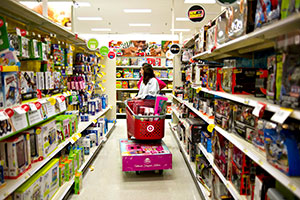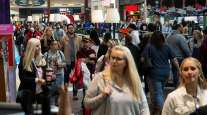Consumer Spending Falls for First Time in Six Months

Consumer spending in the U.S. dropped in July for the first time in six months, a sign households are lagging behind as wages fail to accelerate.
Household purchases decreased 0.1% after increasing 0.4% in June, the Commerce Department reported Aug. 29.
None of the 79 economists in a Bloomberg News survey projected a decrease. Incomes climbed 0.2%, the smallest monthly advance this year.
Consumer spending, which accounts for about 70% of the economy, has been held back by tight credit and meager wage growth that is barely able to keep up with inflation. A sustained labor market upswing is needed to lift earnings and help boost outlays at retailers.
“It’s a weak starting point for the third quarter,” said Jacob Oubina, senior U.S. economist at RBC Capital Markets. “It’s going to lead to a markdown in third-quarter forecasts.”
Projections for spending in the Bloomberg survey ranged from little changed to a 0.4% gain. The June reading was unrevised. The Bloomberg survey median called for incomes to rise 0.3%.
Purchases last month dropped 0.2% following a 0.2% June increase after adjusting for inflation, the data used to calculate gross domestic product.
Spending on durable goods, including cars and trucks, declined 0.6% after adjusting for inflation, following a 0.5% advance in June. Purchases of non-durable goods, which include fuel and clothing, fell 0.2%.
Household outlays on services decreased 0.1%. The diverse category, which includes health care, utilities, tourism, and legal work, is difficult for the government to estimate accurately in the preliminary report.
Prices tied to consumer spending rose 1.6% in the year ended July, the same as in the prior month. Federal Reserve policy makers aim for price increases of 2% a year.
The core prices category, which excludes fuel and food, increased 0.1% in July from the prior month and was up 1.5% from a year ago.



